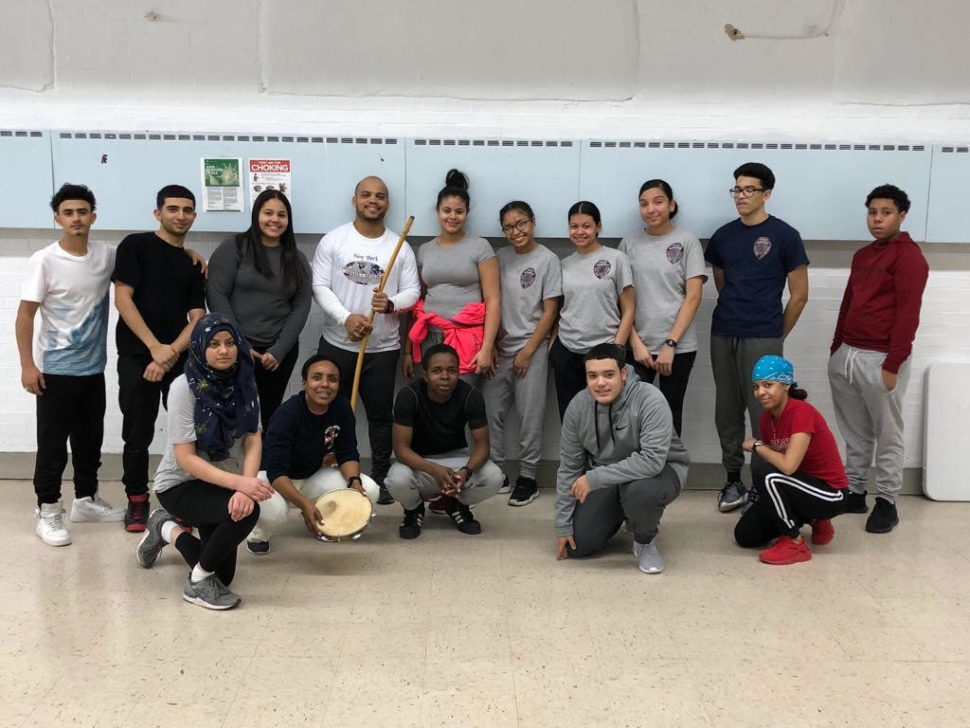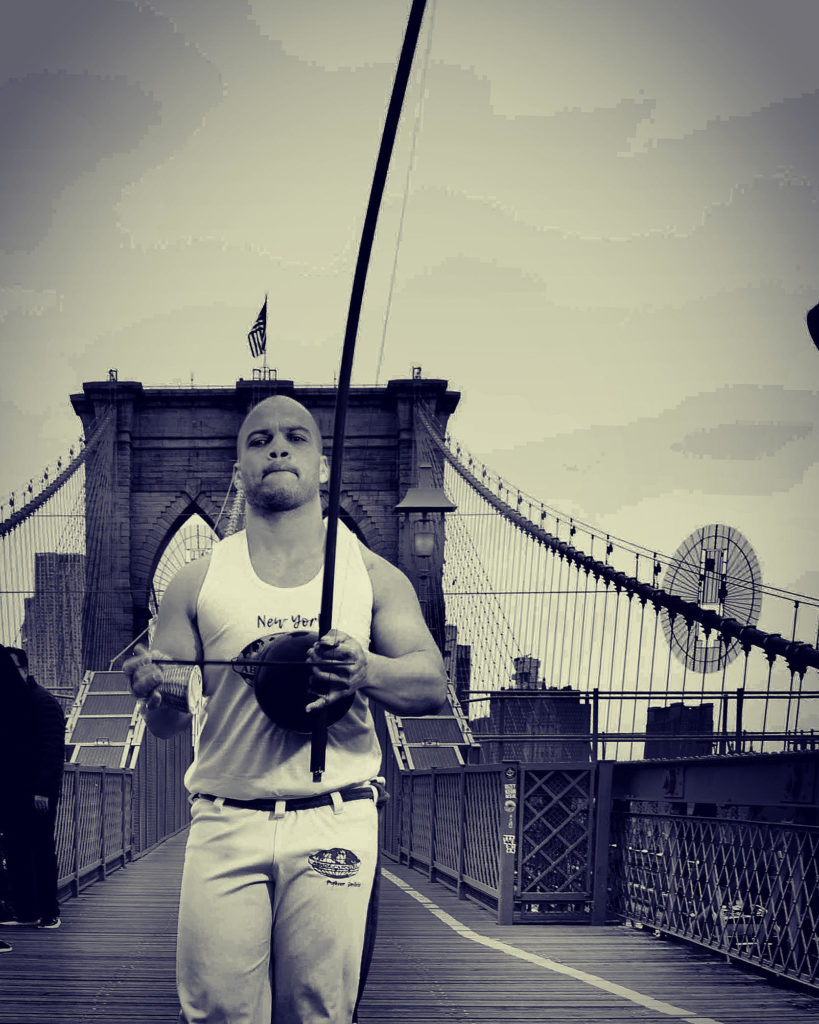Luiz Henrique Guimarães, an Afro-Brazilian man and Capoeira master, has launched an initiative to teach Capoeira— an Afro-Brazilian martial art— to socially disadvantaged Black youth in New York as a way to empower and connect them to the African diaspora.
Known as Professor Mestre Gordinho, he is conducting this social program in partnership with the New York Police Department. According to Guimarães, so far, more than 100 young people have been trained.
“I believe that Capoeira with all its artistic and cultural complexity represents a symbol of resistance,” Professor Mestre Gordinho told Travel Noire. “Born on Brazilian soil by an idea of liberation, today Capoeira— through its very essence— provides an immediate identification on the part of Afro-descendants. In fact, Capoeira is for every society that claims justice and equality through discipline and respect to others.”
Originally from Rio de Janeiro, he has been teaching Capoeira for 30 years. Throughout his career, he has implemented social projects in several favelas (needy communities) in Brazil with the same objective— to empower them to become more conscious citizens.
He moved to New York in 2017 after being invited to work at Abadá Capoeira as principal and instructor.

Along with teaching Capoeira to the youth, Gordinho also works to promote it in the city as a whole.
He explains that for many New Yorkers, the art form is difficult because it is a distinct form of combat that is traditionally practiced by two players who perform attacks, evasions, and acrobatics within the circle (“roda”)— all while following the rhythm of music played around them.
The music is performed by Afro-Brazilian musical instruments, berimbaus and agogô, tambourines and drums. Other people in the ‘roda’ follow with clapping and singing Afro-Brazilian songs.
“Capoeira already has its prominence in NYC, but there is still a lack of understanding about it. Many people ask, ‘Is it a dance? A game? Fight? Choreography?’ Capoeira can be all of these, but it cannot be defined by any of these,” he said.

Developed out of the combat games that came to Brazil with enslaved African, Capoeira is a martial art form that combines acrobatics, dancing movements and efficient lethal fighting technique. Widespread in Brazil, the passion for this Black martial art can also be seen worldwide in places such as Japan, Australia, Russia, Western Europe, Mexico and, of course, the United States. It is estimated that every major city in the US has at least one Capoeira school. In New York, Capoeira is taught in 70 gyms around the city.
Historically, disguising their practice as dance, the enslaved Afro-Brazilians trained in Capoeira as a form of resistance and self-defense. Also, it was during this practice that enslaved Afro-Brazilians could honor ancestors and keep their African traditions through music and spirituality.
Persecuted even after Brazil abolished slavery in 1888, Capoeira was viewed suspiciously by authorities and its practitioners often harassed or imprisoned.
Despite all the oppression conducted by Brazilian government toward Capoeira practitioners, the Afro-Brazilian martial art survived as an underground art form until Brazil’s government relaxed restrictions on it in the 1920s and 1930s. UNESCO granted the activity special protected status as intangible cultural heritage in 2014.





